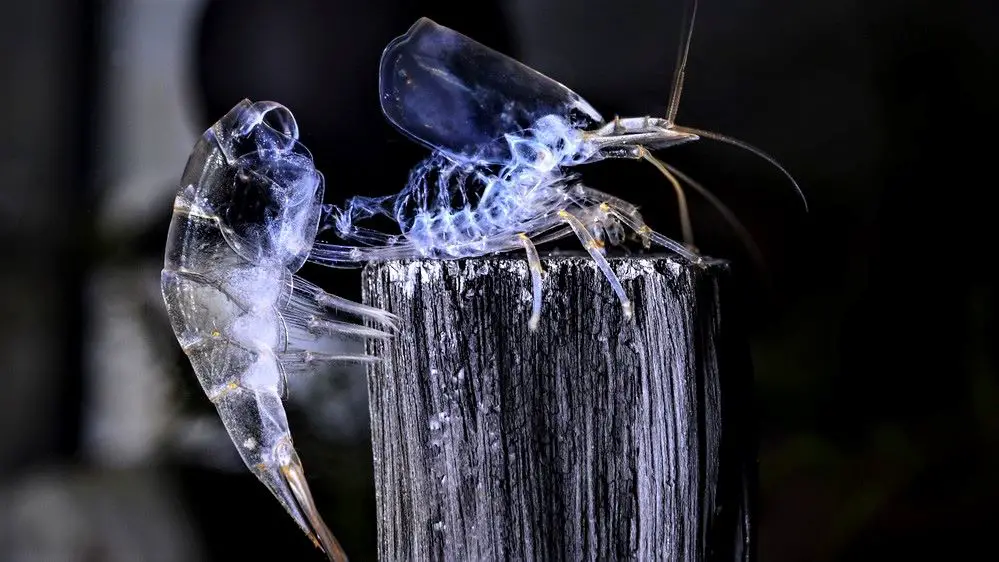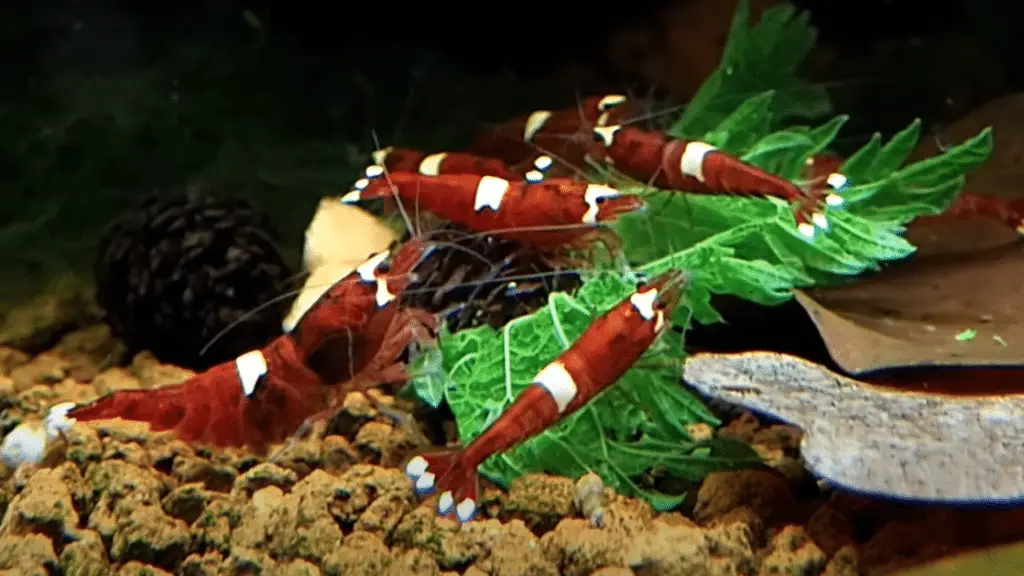Ever noticed that some of your shrimps seem to die off after molting? You might have observed this peculiar phenomenon in your tank, where the deceased shrimps appear to be newly molted, with no visible injuries or signs of fish attacks. This situation can be quite puzzling, especially if your water parameters are optimal.
Shrimps are extremely sensitive after molting, making them more susceptible to stress, bacterial infections, and diseases. Additionally, a lack of nutritional calcium can hinder their recovery post-molt, leading to fatalities.
I’ve had my fair share of challenges as a seasoned shrimp keeper. One of the most perplexing was the mysterious deaths of my shrimps after molting. I remember the first time I noticed it, a couple of my Red Cherry Shrimps (RCS) and Crystal Red Shrimps (CRS) had just molted and were lying lifeless at the bottom of the tank. It was heartbreaking, especially since there were no visible signs of injury or disease.
Over the years, I’ve learned that molting is a critical period for shrimps. They become susceptible, not just physically, but also to environmental changes. I’ve had to adjust my feeding routines, monitor water parameters more closely, and even reconsider the tank mates for my shrimps.
It’s been a journey of trial and error, but with each challenge, I’ve gained invaluable insights into the delicate world of shrimp keeping.
In the following sections, we’ll explore the reasons behind post-molt deaths and some preventive measures. So, if you’ve been noticing similar issues in your tank, stick around. You might find the answers you’ve been looking for.
What happens during the molting process in shrimps?
Molting is a natural and essential process in the life of a shrimp, a fascinating spectacle of nature that allows these little crustaceans to grow and develop. But what exactly happens during this process? Well, let’s dive into the underwater world of our shrimp friends.
Shrimps, like other crustaceans, have a hard exoskeleton that doesn’t grow with them. So, to accommodate their growing bodies, they need to shed this old shell and form a new one, a process known as molting.
The molting cycle begins with the separation of the old exoskeleton from the underlying skin, or epidermis. This is followed by the absorption of water, causing the shrimp to swell and the old shell to crack, usually along the back.
Once the old shell splits, the shrimp wriggles out, leaving behind its former exoskeleton. At this stage, the shrimp is incredibly soft and vulnerable, as its new shell hasn’t hardened yet. This soft shell is initially flexible, allowing the shrimp to grow, but over the next few hours to days, it hardens, providing the shrimp with its necessary armor.
During this period of shell hardening, the shrimp usually hides to avoid predators, as its soft body is an easy target. It’s also common for shrimps to eat their old shells, a clever recycling strategy that allows them to reclaim the valuable calcium and minerals needed to harden their new exoskeleton.
So, the next time you see an empty shrimp shell in your tank, don’t be alarmed. It’s just a sign that one of your shrimps has successfully molted and is now sporting a brand-new shell!

Why are shrimps more vulnerable after molting?
Molting, while a necessary process for growth and development in shrimps, also presents a period of heightened vulnerability. But why is this the case? The answer lies in the nature of the molting process and the physiological changes that shrimps undergo during this time.
When a shrimp molts, it sheds its old exoskeleton and forms a new one. However, this new exoskeleton is initially soft and flexible, taking some time to harden. During this period, the shrimp lacks its usual protective armor, making it more susceptible to injuries and predator attacks. Even in a well-managed aquarium, other tank inhabitants might unintentionally harm a freshly molted shrimp.
Moreover, the molting process is quite strenuous, requiring significant energy and leaving the shrimp physically weakened. This, coupled with the lack of a hard exoskeleton, can also make the shrimp more susceptible to infections and diseases.
The molting process is also closely linked to the shrimp’s water environment. Any drastic changes in water parameters, such as temperature, pH, or mineral content, can disrupt the molting process and cause stress to the shrimp, potentially leading to fatal complications.
Therefore, providing a safe and stable environment for your shrimps is crucial, especially during their molting period. This includes maintaining stable water parameters, providing ample hiding spots, and ensuring a balanced diet to support their health and growth.
How does a lack of calcium affect shrimp after molting?
Calcium plays a pivotal role in the life of a shrimp, particularly during the molting process. It’s a key component of their exoskeleton, providing the necessary strength and rigidity. But what happens when there’s a lack of calcium? Let’s explore.
If there’s a lack of calcium in the shrimp’s diet or the water, the new exoskeleton may not harden properly. This can leave the shrimp with a soft shell, making it more susceptible to injuries and infections.
Moreover, a calcium deficiency can also disrupt the molting process itself. Shrimps need calcium to initiate and regulate the molting process. Shrimps may struggle to molt without enough calcium, leading to partial or failed molts. These situations can be life-threatening, as the shrimp can get trapped in its old shell or suffer from physical stress and exhaustion.
A lack of calcium can severely deform the shrimp’s body and appendages. These physical abnormalities can affect the shrimp’s ability to move, feed, and reproduce, severely impacting its quality of life.
Therefore, ensuring a sufficient supply of nutritional calcium through a balanced diet and appropriate water parameters is crucial for the health and well-being of your shrimps, especially during their molting period.

What are the signs of a successful molt in shrimps?
Spotting a successful molt in your shrimp tank can be a rewarding experience, a testament to your efforts in providing a conducive environment for your aquatic pets. But how can you tell if a molt has been successful? Here are some indicators.
One of the most apparent signs of a successful molt is the presence of an empty exoskeleton in the tank. This discarded shell, often intact and resembling a ghostly version of your shrimp, clearly indicates that one of your shrimps has molted. Don’t be alarmed if you see this; it’s a normal part of the shrimp’s life cycle.
Another sign of a successful molt is the shrimp’s behavior post-molt. A shrimp that has successfully molted will typically hide for a while as its new exoskeleton hardens. Once the shell is hard enough, the shrimp will resume its regular activities, such as foraging for food and interacting with other tank inhabitants.
You might also notice a size increase in your shrimp after a successful molt. Since shrimps molt to accommodate their growing bodies, a noticeable growth spurt is a good sign that the molt has served its purpose.
Lastly, a healthy appearance and vibrant coloration indicate a successful molt. If your shrimp continues to look healthy and vibrant post-molt, it’s a good sign that the molting process went smoothly.
Remember, molting is stressful for shrimps, so providing them with a safe and stable environment is essential to ensure a successful molt.

How can I ensure a safe and healthy molting process for my shrimps?
Ensuring a safe and healthy molting process for your shrimps involves a combination of maintaining optimal water conditions, providing a balanced diet, and creating a stress-free environment. Let’s delve into each of these aspects.
Firstly, water conditions play a crucial role in the molting process. Shrimps prefer stable water parameters, so it’s essential to regularly monitor and maintain the temperature, pH, and hardness levels in your tank.
Sudden changes in these parameters can stress your shrimps and disrupt their molting process. Also, ensure that your water is free from harmful chemicals like chlorine and heavy metals, which can harm your shrimps’ health.
Secondly, diet is key. Shrimps require a balanced diet rich in calcium and other minerals to support their exoskeleton formation. You can provide this through high-quality commercial shrimp food and natural sources like blanched vegetables and leaf litter. Remember, overfeeding can lead to water quality issues, so feeding in moderation is important.
Lastly, creating a stress-free environment is vital for a successful molt. This includes providing plenty of hiding spots for your shrimps to retreat during their vulnerable post-molt period. Also, be mindful of the other inhabitants in your tank. Some fish species can be aggressive towards shrimps, especially those that have just molted.
By paying attention to these aspects, you can create a conducive environment that supports the molting process, helping your shrimps grow and thrive in your care.

In Summary: Ensuring a Healthy Molting Process for Your Shrimps
Understanding and supporting the molting process is crucial in the fascinating world of shrimp keeping. Every detail matters from recognizing the signs of a successful molt to providing the proper diet and environment. Remember, stable water conditions, a balanced diet rich in calcium, and a stress-free environment are keys to ensuring a safe and healthy molting process for your shrimps.
Ultimately, shrimp keeping is a journey filled with learning and discovery. Don’t be disheartened by challenges along the way. Instead, see them as opportunities to learn and grow as a shrimp keeper. And remember, you’re not alone in this journey.
If you ever need help or advice, don’t hesitate to reach out. If you can’t reach me here, check out the aquarium shrimp-keeping group on Facebook. A whole community of fellow shrimp keepers is ready to lend a hand.
On a final note, keep observing, keep learning, and most importantly, keep enjoying the wonderful world of shrimp keeping.
Happy Shrimp Molting!
FAQ on Shrimp Molting
Q. Why are my shrimp suddenly dying?
A. Sudden shrimp deaths can be attributed to various factors, including drastic changes in water parameters, poor diet, and molting problems. Shrimps are sensitive creatures, and any significant changes in their environment can cause stress, leading to fatalities.
Q. Are shrimp weak after molting?
A. Yes, shrimps are indeed weak and vulnerable after molting. This is because their new exoskeleton is initially soft and takes time to harden. During this period, they are more susceptible to injuries, infections, and diseases.
Q. What is incomplete molting of shrimp?
A. Incomplete molting, also known as a failed molt, occurs when a shrimp is unable to fully shed its old exoskeleton. This can be due to poor water conditions, inadequate nutrition, or other stress factors. Incomplete molting can be life-threatening for shrimps as they can get trapped in their old shell.
Q. Should I remove shrimp molt from the aquarium?
A. Generally, it’s not necessary to remove the molted shells from the aquarium. Shrimps often consume their old shells to reclaim valuable minerals like calcium, which are essential for the hardening of their new exoskeleton.
Q. Why did my shrimp die after molting?
A. Shrimps can die after molting due to various reasons. They could be stressed from the molting process, have an inadequate supply of essential nutrients like calcium, or the water conditions might not be optimal. It’s crucial to monitor your shrimps closely during their molting period and ensure they have a conducive environment for a successful molt.
